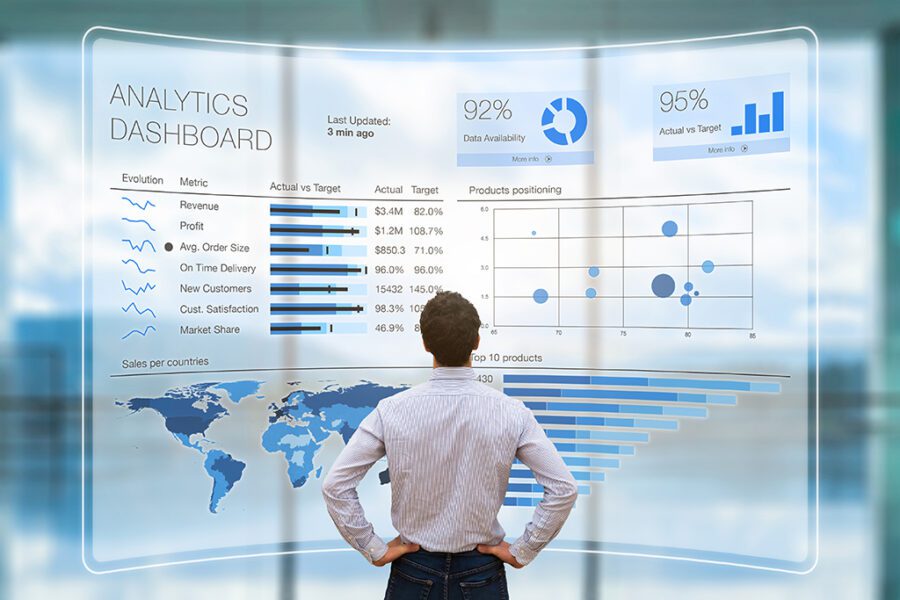In today’s competitive business environment the importance of data is an asset that can make or break an organization. Power BI, Microsoft Fabric and other tools that are powerful can be used by companies to realize the full potential of their data. These platforms are at the heart of business intelligence and, when combined with Azure Data Factory they become an effective tool for data analytics and decisions.

Power BI: Your Business Intelligence Companion
Power BI is a tool for business intelligence from Microsoft which helps businesses visualize their information and share insights. Power BI users can create interactive reports and dashboards, transforming raw data into useful information.
Whether you’re a small startup or a large enterprise, Power BI adapts to your needs. Power BI integrates seamlessly across multiple data sources and makes it simple to combine data from multiple platforms and databases. The user-friendly drag-and-drop interface lets even non-technical people to produce meaningful reports.
Power BI’s platform enables instantaneous data processing. This guarantees that you always have the most current data. Power BI comes with a variety of visualizations to help you present information in a compelling and digestible way. Collaboration and sharing of reports with colleagues enhances decision-making and creates a data-driven business culture within your organization.
Microsoft Fabric Microsoft Fabric: The Weaving Together of Data Excellence
Microsoft Fabric is the underlying system that connects and orchestrates data across different Microsoft services. It is the fabric that transforms your data into an easily accessible and reusable entity. This allows businesses to gain insight quickly.
As companies deal with increasing amounts of data, Microsoft Fabric provides the foundation for data consistency as well as integrity. Microsoft Fabric integrates a variety of tools, such as Azure Data Lake Storage (Azure SQL Data Warehouse), Power BI, and others. This interconnectedness allows data to flow seamlessly and allows insights to be derived from different sources.
Microsoft Fabric’s capabilities to transform data are a great example of its versatility. Use it to clean up and prepare data for analysis. It is also possible to use it to ensure that data complies with your organization’s policies on data governance. Microsoft Fabric is the platform that will ensure your data is reliable, accurate, and ready for analytics.
Azure Data Factory: the Gateway to Data Transformation
Azure Data Factory, another important component of modern business intelligence, is Azure Data Factory. It’s a cloud-based integration service that permits you to create, schedule and manage data-driven workflows. Azure Data Factory provides meaningful information through the orchestration of data movement and transformation.
Azure Data Factory’s flexibility in connecting to different sources of data is among its main advantages. If your data is on premises or in the cloud it is easily integrated and provide you with a holistic view of your entire data ecosystem. The platform can handle batches of processing, real-time streaming of data and big-data analytics. This is why it is suitable for all kinds of use cases.
Azure Data Factory has a visual user interface that makes it easier for designing data pipelines. Even if you’re not a coder, it’s simple to create an agenda, plan and manage data pipelines. It lets business users regulate their data integration process and also allows them to create data on their own.
Power BI with Microsoft Fabric, Azure Data Factory, and Power BI
If Power BI, Microsoft Fabric, and Azure Data Factory come together, they create a dynamic trio that could revolutionize your data analytics activities. How do they interact?
1. Data Integration: Azure Data Factory is able to connect with a variety of data sources. This will ensure that all the data you own are available. Microsoft Fabric orchestrates the data that comes from different services through this data integration capability. It makes sure that your data is correctly organized, cleansed and is ready to be analysed in Power BI.
2. Data Transformation: Microsoft Fabric plays a crucial role in data transformation and allows you to tailor your data to meet your requirements for analytical analysis. Fabric is an effective tool for data transformation as well as data cleansing and manipulation.
3. Power BI is able to take over after your data is analyzed and refined. Power BI allows you to make visually appealing reports and dashboards that make the most complex data easy to comprehend. It allows you to present these findings and inspire your team members to make decision-based on data.
4. Scalability: Azure Data Factory can adapt to growing numbers of data. The combination of Power BI with Microsoft Fabric will ensure that your data remains reliable and consistent even when your business expands.
5. Power BI & Azure Data Factory offer real-time data that is essential to a rapid decision-making process.
Conclusion
To be competitive in the world of business intelligence, organizations must be able leverage data effectively. Power BI combined with Microsoft Fabric and Azure Data Factory can take your business analytics to the next level. If you’re looking to build stunning visualizations, make sure you have data consistency, or streamline the workflow of data, this trio has you covered. Discover the potential of your data with the help of business intelligence.